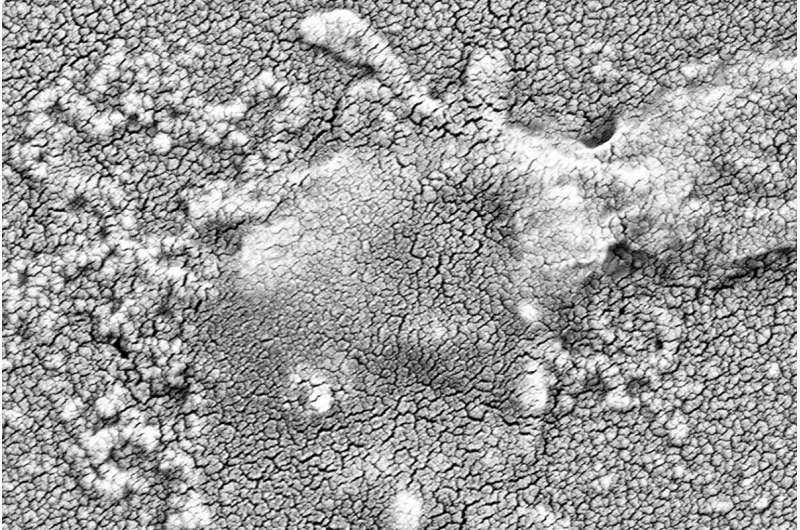New method can disarm antibiotic resistance in deadly bacteria

Scientists think they may have uncovered a whole new approach to fighting antibiotic-resistant bacteria, which, if successful, would help address a health crisis responsible for more deaths every year than either AIDS or malaria.
A team of researchers led by Despoina Mavridou of The University of Texas at Austin found a new way to impair antibiotic resistance in bacteria that cause human disease, including E. coli, K. pneumoniae and P. aeruginosa, which are responsible for the majority of harm caused by resistant infections. The team made the bacteria vulnerable again to antibiotics by inhibiting a particular protein that drives the formation of resistance capabilities within the bacteria.
“It’s a completely new way of thinking about targeting resistance,” said Mavridou, an assistant professor of molecular biosciences.
Bacteria are becoming increasingly resistant to existing antibiotics, and researchers have struggled to identify new bacteria-fighting drugs, leaving the world vulnerable to deadly superbugs. A January study in The Lancet by another team found antimicrobial resistance to be the direct cause of at least 1.27 million deaths globally in 2019, making antibiotic resistance one of the world’s leading causes of death.
Antibiotic resistant bacteria have a host of different proteins in their arsenals that neutralize antibiotics. To function properly, these resistance proteins must be folded into the right shapes. The researchers discovered that yet another protein, called DsbA, helps fold resistance proteins into those shapes.
For their proof-of-concept study, which was recently published in the journal eLife, Mavridou and her fellow scientists inhibited DsbA using chemicals that cannot be used directly in human patients. The team plans now to work on developing inhibitors that can achieve the same outcome and be safely used in humans.
“Other approaches focus on inhibiting resistance proteins, but nobody had thought to try and prevent their formation in the first place,” Mavridou said.
Their goal is to combine a DsbA inhibitor with existing antibiotics to restore the drugs’ ability to kill bacteria. Because it targets the machinery that helps assemble antibiotic-resistance proteins in dangerous bacteria, the approach would render several types of proteins critical for resistance ineffective by preventing their ability to fold or create disulfide bonds.
“Since the discovery of new antibiotics is challenging, it is crucial to develop ways to prolong the lifespan of existing antimicrobials,” said Christopher Furniss, one of the lead authors of this study at Imperial College London. “Our findings show that by targeting disulfide bond formation and protein folding, it is possible to reverse antibiotic resistance across several major pathogens and resistance mechanisms. This means that the development of clinically useful DsbA inhibitors in the future could offer a new way to treat resistant infections using currently available antibiotics.”
DsbA is mostly a house-keeping protein in bacteria that promotes protein stability and folding. Before this study, scientists already knew that DsbA is also involved in a range of functions in pathogens, such as helping build toxins that attack host cells, or assisting with the assembly of needle-like systems that can deliver these toxins into human cells and cause disease. But Mavridou, who studied DsbA for many years, suspected that it might also play an important role in the folding of proteins that help bacteria resist antibiotics. She started investigating this possibility while at Imperial College London, before joining the UT Austin faculty in 2020.
“We reasoned that if DsbA is required for the folding of resistance proteins, preventing it from working would indirectly inhibit their function,” said Nikol Kadeřábková, a postdoctoral researcher at UT Austin and the second lead author of the study. In continuing work on this system, Kadeřábková is driving the current effort to discover DsbA inhibitors that would be safe in humans.
New antimicrobial therapeutics to fight superbugs
R Christopher et al, Breaking antimicrobial resistance by disrupting extracytoplasmic protein folding, eLife (2022). DOI: 10.7554/eLife.57974
Christopher JL Murray et al, Global burden of bacterial antimicrobial resistance in 2019: a systematic analysis, The Lancet (2022). DOI: 10.1016/S0140-6736(21)02724-0
Citation:
New method can disarm antibiotic resistance in deadly bacteria (2022, February 22)
retrieved 22 February 2022
from https://phys.org/news/2022-02-method-antibiotic-resistance-deadly-bacteria.html
This document is subject to copyright. Apart from any fair dealing for the purpose of private study or research, no
part may be reproduced without the written permission. The content is provided for information purposes only.
For all the latest Science News Click Here
For the latest news and updates, follow us on Google News.

